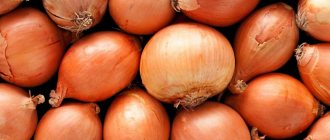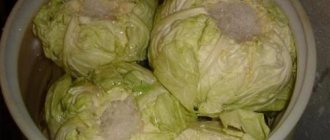Eating a delicious juicy melon in the last days of summer, many people think about whether they should save this healthy fruit until winter to enjoy during the cold season. There are several ways to store it for a long time. With the right approach, you can save the melon until the new year and enjoy the fragrant and juicy pulp, looking at the garland and the falling snow outside the window.
Conditions and terms for storing melon at home
When purchasing a melon for wintering, first of all pay attention to the degree of ripeness. It must be immature. Only in this case is it possible to save it until the New Year.
A few basic rules:
- Store only in a cellar or similar place. That is, the room temperature should be from +2°C to +4°C. Do not store melon in the refrigerator. It will stay there for no more than a month, regardless of the variety.
- Air humidity – from 60% to 85%.
- The storage container must be well ventilated.
- Store melon separately from vegetables that have a strong smell.
Attention! You cannot store melon next to beets and potatoes. In no case - near apples. They release ethylene, which promotes rapid ripening of the fruit.
Optimal storage conditions
All ways to keep melon fresh for the winter ultimately come down to ensuring the optimal temperature. To prevent the fruit from rotting, you will need good air circulation around the peel and low humidity.
Temperature
The optimal temperature for storing melon in winter is +2+4 degrees. In the first months of autumn, a deviation of up to +10 + 13 is possible. In a warmer room, accelerated ripening of the pulp will begin to occur and the melon will quickly deteriorate. Reduced temperatures are not so destructive, but they do have a negative effect on the taste. The pulp becomes unpleasantly watery and becomes unsuitable for consumption.
There should be no radiators or heating pipes in the room where the crop is stored. Even if maintained at + 10 degrees, they greatly dry the air. The consequence will be cracking of the peel and premature spoilage of the melon.
Air circulation and humidity
The remaining rules on how to store melon concern the level of humidity and air circulation in the room. The first parameter should not exceed 80%. Otherwise, accelerated decay will begin. To extend the shelf life, you will have to provide good airflow to the surface of the melon. To do this, melons are hung in woven nets so that they do not contact each other.
Note! It is better to store melon separately from other crops. The pulp instantly absorbs the odors surrounding it. Earthen crops (potatoes, carrots, beets, etc.) are especially detrimental to taste.
Is it possible to keep melon fresh until the New Year?
To preserve the melon until the holidays, and then delight guests and household members, take the time to choose the right fruit. Let's consider which varieties are suitable for wintering and how long each one can be stored.
Which varieties are suitable for long-term storage?
There are three types of varieties :
- Early . The maximum shelf life is up to a month. Then the melon loses its taste and appearance. This is best eaten within 2-3 weeks.
- Mid-season - stored for 3-4 months. It is also worth monitoring the appearance, do not overexpose, otherwise you will get a spoiled product.
- Late ones can be stored for up to six months if stored properly.
Such periods are valid only for storage in cellars or basements!
For wintering, choose late varieties of melon . These include:
- Golden (pictured). The harvest is harvested no earlier than 90 days from the first shoots. The fruits are round or oval in shape, the skin is bright yellow, the skin is smooth. It has a pronounced aroma, is soft, juicy and pleasant to the taste. Shows high resistance to diseases, insects, and sudden temperature changes.
- Wintering . They ripen 95 days from the first shoots. The shape is oval, the peel is yellow-green with a large mesh, the flesh is greenish, juicy and tender. Weight is within 2-3 kg. Resistant to drought and disease.
- Torpedo. Ripening time is from 100 to 113 days. It has an oblong shape, rich taste and aroma, yellow skin. Thanks to the mesh on the surface of the fruit, resistance to hot weather conditions and diseases increases. Weight reaches from 4 to 7 kg.
- A pineapple . It is grown only in greenhouses or greenhouses, as it is not frost-resistant. Ripens in 95 days. Oval, elongated shape. Orange peel, convex mesh. Weight reaches 2-3 kg. Incredibly juicy and aromatic. It tastes like pineapple, which is true to its name. The variety is resistant to diseases.
How to choose fruits
Don't grab the first thing that comes to hand. Choose carefully: inspect, touch, check for defects.
Signs to watch out for:
- the number of cracks on the peel (the fewer, the better) - indicates that the berry is unripe;
- The “nose” of the melon is elastic;
- the skin has a greenish tint - the melon has a chance to last until the New Year;
- no damage to the fetus (pressures, cracks, dents);
- pronounced aroma.
If you grow your own melons , pick them a week before they are completely ripe. Leave the stalk at least 3 cm long. It is better not to cut the fruit, but to pick it.
Factors Affecting the Storage Time of Yellow Pumpkin
Melon pulp contains pectin. This plant polysaccharide ensures long-term storage of sweet pumpkin. But this is not enough. To enjoy it in winter, it is important to take into account all factors: variety, degree of maturity, living conditions.
To preserve melon until the new year, without compromising its quality, you need to consider the following points:
- Choose the right variety. There are varieties of the crop with a thin skin and a sugary, juicy edible part. Such specimens cannot be stored for long. Therefore, it is better to give preference to varieties with thick skin and elastic flesh. Such fruits will last until deep winter, while retaining their taste properties. Varieties with increased keeping quality include: Torpeda, Bykovchanka, Gulyabi.
- Choose the right melon. Fruits with damaged skins, dents, or scratches should not be sent for storage. The melon tail should be green and elastic. Its dryness, darkening or complete absence indicates that the fruit is overripe and will spoil before the new year. Only those specimens that were cut from melons while unripe can be sent for storage. But fruits that are too green should not be used: they will rot or retain a grassy taste.
- Consider the room temperature. A high rate can cause the development of pathogenic bacteria and fungi, which provoke the formation of mold and rot on the melon. The optimal temperature value is 2-6 degrees.
- Create the required level of humidity. It can be measured using a special device - a hygrometer. It can be purchased at any hardware store. The approximate humidity level in the room is 80–85%. An increase in the indicator leads to cracking and rotting of the fruit, and too low - to drying out and weight loss.
- Lighting. Fruits should be stored indoors with limited access to light. When exposed to natural light sources, pathogenic bacteria begin to develop, reducing the shelf life of the product.
Melon on the holiday table is a real exotic, which will dominate against the background of the usual bananas and tangerines. To achieve results, it is important to provide comfortable storage conditions and choose the right product.
Ways to preserve melon until the New Year
So what should you store the melon in so that it is present on the New Year's table? Let's consider all the options.
On the grid
The best storage method is hanging in a net from the ceiling in a basement or cellar . The fruits should hang at a sufficient distance from each other, without touching. Bags made of reeds or vegetable mesh made of natural or synthetic fibers are suitable.
In the box
To store melons, the box is filled with one of the components :
- sand;
- perlite;
- vermiculite;
- grain (mainly rye);
- natural sawdust.
Filler is used to retain moisture . Holes are left in the box to allow oxygen to enter. The fruit is lowered into the sand or filler with the stalk down. Inspect the melons regularly. If one begins to deteriorate or rot, it is immediately taken out to save the rest.
On the racks
When the harvest is large, storage racks are chosen. They are covered with soft cloth, sawdust, straw or hay are poured under the cloth. This way, dents will not form, which will lead to rotting of the product.
Place at a short distance in one layer . They check the melons about 2-3 times a month, turn them over, and inspect them for damage and rotting processes. The ripe ones are removed and served.
At room temperature
Melon can be stored in an apartment for up to 5-7 days .
But it is better not to leave it on a hard floor, but to cover it with thick fabric to avoid rotting. Avoid exposure to direct sunlight and proximity to heating devices, as heat enhances the ripening process. Ventilate the room regularly.
Useful tips
Experienced melon growers believe that even a novice gardener who can show the necessary amount of attention and patience can figure out the issues of storing melons.
There are a number of folk wisdom that allow you to extend the shelf life of melon for consumption:
- To prevent the melon aroma from leaving the cut fruit, you should eat the fruit at room temperature, trying not to resort to the refrigerator;
- If part of the melon is not eaten, there is no point in delaying storage. The best ways to process the fruit are by drying or freezing the slices. Such variations will be useful to the housewife in cooking;
- The remains of the melon, two days after opening the fruit, begin to release substances that are dangerous to the body. Even if the fruit was in the refrigerator, it would be better to dispose of it;
- Frozen melon pieces can retain their beneficial qualities for six months. To do this, the fruit is cut into small cubes, which are laid out on a plate at a distance from each other and placed in the freezer. When the parts “set”, they are transferred to plastic bags, carefully closed, removing air, and freezing continues;
- Melon jam is the best way to recycle leftovers from a sweet harvest or purchase.
The nuances of storing ripe melon
Do you want to enjoy the delicate taste of melon a couple of days after purchase? Have you purchased a large quantity at once?
Requiring ripening
What to do with melon that still needs to ripen:
- Place in a dark and cool place on a soft surface.
- Wrap loosely in paper and place in the refrigerator.
- In the refrigerator, place in a separate section for vegetables.
Cut
Did you buy a large melon but couldn’t eat it all at once? No problem. Cover with paper or a cotton napkin and put in the refrigerator . This way it will keep for a maximum of three more days. Leave the seeds, then it will not spoil.
Recycled storage
Melon is frozen, canned, dried and dried. In this form, it pleases until the new harvest.
Freezing
Do you want to use the freezing method? Follow these tips :
- Wash and dry the fruits well.
- Cut into slices or use a special spoon to make balls of the pulp.
- Spread evenly on a tray and freeze for 12 hours.
- Place the frozen balls or slices in bags and return them to the freezer.
- Get a delicious and healthy independent dessert at any time of the year. Or use for other dishes.
Drying
You can dry it in an electric dryer or in a conventional oven.:
- Wash and dry the fruit.
- Cut into slices no larger than 2 cm.
- Place in a single layer on a baking sheet.
- Place in the oven preheated to +220°C.
- After 15 minutes, open the door slightly and reduce the temperature.
- Dry the slices at +85°C for 6 hours.
- Turn them over every half hour to ensure even drying.
- After drying in the oven, leave the slices in a ventilated area for several days to evaporate excess moisture.
- Store in a glass container, tightly closed, or in cloth bags in a dark place, such as a pantry or kitchen cupboard.
Canning
An easy, simple and tasty way to preserve melons for the winter.
Will need:
- melon – 2.5 kg;
- sugar – 2 tbsp;
- citric acid – 1 tsp;
- filtered water – 1 l.
How to cook:
- Wash the melon thoroughly and dry.
- Cut into large slices and remove the core. Remove the seeds. Cut off the skin.
- Cut into 3-4 cm pieces.
- Place in jars.
- Cook the syrup: pour water into a saucepan, add sugar and citric acid, boil for five minutes. Pour hot into jars.
- Place the jars in a bowl of boiling water, boil for 10 minutes to sterilize, remove, roll up the lids and turn over.
Preparing melon for storage
- select fruits of certain varieties;
- carry out proper cleaning:
- correctly select specimens for storage.
Gulaba and Torpeda melons are most adapted for long-term storage, according to local Mirzachul. For storage, unripe fruits are chosen. But the aroma from the melon should already be coming. Green fruits will not gain flavor and will spoil. Choose vegetables without the slightest external surface defect. Dark spots are signs of internal decay. A spout that is too soft will indicate overripe pulp that cannot be stored. There should be no cracks, dents or scratches.
The favored fruit is torn from the vine by hand, leaving a tail of at least 3 cm. Harvesting should be carried out in cloudless weather. The melons are kept in the sun for several days, turning them over on the other side under the sun for better warming. During the time spent in the garden, the fruit acquires the properties necessary for storage.
Buying the right fruit
The key to successful long-term storage is the choice of a quality product. Fruits reach the shelves from far away: Uzbekistan, Kazakhstan, Krasnodar Territory, Abkhazia, etc. And they are transported by cargo trucks. During transportation, goods often break and even spill over the sides of the car.
To ensure that melon storage does not disappoint, in addition to its appearance, you need to pay attention to possible internal damage. They shouldn't exist. A good fruit has the following characteristics:
- symmetrical round or oval shape;
- absence of minor damage to the peel: abrasions, scratches, dents;
- dense, elastic to the touch, but not hard;
- characteristic melon aroma - if it is not there, then the fruit is harvested green and does not have the ability to ripen;
- uniform color of the peel - a pale spot on one side from contact with the soil is allowed;
- firmly seated, dry stalk.
If there are cracks, deep scratches, especially rot and mold, it is not worth buying even for quick consumption. Such melons are dangerous due to the presence of pathogenic bacteria, and even more so will not be stored.
Fine:
- the mesh on the surface is uniform, rough to the touch;
- when tapping, a dull sound is heard;
- dry tail 4-6 cm long;
- the nose is round and hard.
Badly:
- strong odor with notes of fermentation or acid;
- with a whole peel, one side is softer than the other;
- green color;
- dark spots.
Freezing melon for the winter
How to preserve melon for the winter
The humidity in the room should be no more than 80%, otherwise rot will inevitably appear. Ventilation is also needed. But most importantly, melon should be stored separately from other vegetables, as it absorbs foreign odors, and apples accelerate the ripening of the pulp.
To preserve, each fruit is placed in a separate woven net and hung so that the pumpkins do not touch each other or the walls. Once a month, fruits are inspected, rejecting any defects. The darkened pulp cannot be eaten; it becomes poisonous.
There is such an indicator of shelf life from the moment of harvesting fruits from melons:
- low shelf life less than 15 days;
- short-lived – up to 30 days;
- medium-length – up to 60 days;
- recumbent – up to 90 days;
- very shelf-stable ones that can be stored for more than three months.
How to store melon in an apartment?
Many housewives put ripe tomatoes in the refrigerator for storage and wonder why the tomatoes changed their taste and became fibrous and watery. The same thing happens with melon, but not as noticeably.
There is a list of foods that can be stored in the refrigerator. Melon is not on this list. That is, the fruit, even cut, better retains its taste and aroma in room conditions. However, the sweet pulp promotes the proliferation of harmful microflora on the open surface. How long you can store cut melon in the refrigerator is a simple decision. Can be stored in a special container with an airtight lid for no more than 2 days. If the fruit is undamaged, it will lie on the bottom shelf in the vegetable department for more than a week.
Candied melon—video
Melon is a seasonal product. Delicious sweet fruits appear on our table towards the end of summer. They can be bought in stores and at the market or grown in your own garden bed and greenhouse. At the same time, few people know that the fragrant fruit, with the right approach, can be stored right up until the New Year. Information on how to preserve melon at home will be useful to all connoisseurs of this vegetable.
How long to store cut melon
Since some varieties are large, it is difficult to consume the whole vegetable at once. It cannot be left at room temperature, as the cut slices will quickly weather and begin to rot. There are several ways to store melon: freezing, drying, canning.
How long can cut melon last in the refrigerator?
Cut melon can be stored in the refrigerator for no more than 48 hours. Since during long-term storage it loses its beneficial properties, loses its taste and aroma, and releases ethylene, which is harmful to health. Even when stored in the refrigerator, the vegetable begins to dry out and spoil.
How to properly store cut melon
Many housewives make the grave mistake of storing cut melon in the refrigerator, having first wrapped it in plastic or put it in an airtight container. In a closed space, melons actively release ethylene, which leads to rapid drying and accumulation of substances harmful to the body. To preserve the slices for a longer period, cover them with a cotton cloth or paper napkin.
If it is not possible to eat the fruits fresh, they can be dried or frozen. Frozen melon does not lose its beneficial qualities, and when defrosted, it fills the apartment with an unforgettable aroma.
Freezing is an easy and effective way to preserve freshness and flavor. The dense pulp is cut into random pieces, placed on a baking sheet and put in the freezer. After they freeze, they are packaged in bags or sealed containers. Frozen product can be stored for about 1 year.
The cut slices can be dried. For this:
- The prepared fruit is cut into slices 2 cm thick.
- Place them on a baking sheet so that they do not touch each other and place them in an oven preheated to 200 °C.
- After 15 minutes, the temperature is lowered to 80 °C and the door is opened for better air circulation.
- After 6 hours, the melon slices are dried in a well-ventilated area for the final loss of moisture.
- Store the prepared product in a glass jar with a tightly closed lid or in bags made of natural fabric in a dark, dry place.
Varieties for long-term storage
Like every cultivated plant, melons have many varieties that differ in their growing season. They can be roughly divided into early, middle and late.
Only late varieties can last until the New Year. Even mid-late varieties, those grown under film covers, do not have such keeping quality. The register of varieties contains 144 varieties, and, unfortunately, only 4 varieties can please you on the New Year holiday:
- Bravura – commercial qualities are preserved for 40-60 days.
- Wintering - breeders guarantee safety for 3-3.5 months.
- Chiano is suitable for consumption within 85 days after picking the fruit.
- Habalon - excellent taste, 3-kilogram fruits will last for 80-90 days without loss of quality.
Near Moscow, greenhouse melons were grown back in the 16th century. The breeders of that time achieved significant success. Foreign travelers noted in their notes that Moscow melons are larger and better than anywhere else.
Which varieties are suitable for long-term storage: choosing the “right” fruit
According to the ripening period, fruits are divided into three groups:
- early varieties;
- medium grades;
- late varieties.
Only late fruits have a chance to last as long as possible.
Only late fruits have a chance to survive as long as possible
Of these, only 4 varieties retain their quality and aroma best:
| Variety name | Fruit freshness period |
| Bravura | From 40 to 60 days |
| Wintering | From 90 to 100 days |
| Chiano | 85 days |
| Habalon | 80 to 90 days |
There are tricks to avoid spoilage of the fruit and preserve it for as long as possible:
- Fruit removal takes place in dry and sunny weather.
- When harvesting a melon, a tail of at least 5 centimeters in length is left. In good fruit, it looks a little dried out.
- Unripe fruits cannot be removed and stored; they will spoil before they reach maturity.
- A good melon is brightly colored, its skin is intact, and it is free of stains and damage.
- Fruits just picked from the garden cannot be immediately brought indoors; they need to be allowed to rest - lie in the open air. This will help the melon prepare for winter.
Harvesting
When growing independently, harvest the fruits in dry, sunny weather. Separate the melons from the vine with your hands, be sure to leave a stalk about 5 cm long.
Reject all suspicious specimens immediately:
- the fruits must be fully ripe;
- “tail” – in the initial stage of drying, and not wet and green;
- the peel is dense and tight, free of damage, dents, and traces of pest activity.
Leave the melons selected for winter storage in the garden bed to dry for a while. Turn the fruits several times. During this time, the peel will dry completely, and the moisture will concentrate in the pulp. Only such fruits are completely ready to be transferred to storage.
Unripe melons are poorly stored. They often rot before reaching ripeness. In order for the melon to lie safely until winter, it is necessary that it ripen on the root.
Features of growing and collecting melons for long-term storage
If you are growing melons in your garden, you should know how to prepare them for storage. Winter varieties are usually planted in late spring - early summer, then the harvest can be harvested in early autumn.
Before harvesting, melons should not be fertilized or watered. Potash fertilizers have a particularly negative effect on storage time. Also, seven days before harvest, it is advisable to break the stalk, so that the beneficial substances will remain inside the fruit.
Melons are harvested early in the morning, in dry weather. The tails are not completely torn off. The picked fruits are laid out in a previously prepared place, where they remain for 10 to 12 days. At night, it is best to cover them with leaves to protect them from dew. From time to time, the melons must be turned over so that the sun's rays come into contact with each side. After lying like this, the fruits will get rid of excess moisture, the peel will become coarser and will be better protected from pathogenic bacteria.
Methods, conditions and periods of storage
There are many options for storing melon at home. The choice largely depends on two factors:
- Do you live in a private house or apartment?
- What fruits do you have: ripe or not very ripe.
The shelf life of melon will be different in each case. So, in an apartment, fresh food will last much less, because there are no special conditions for saving it.
You can save melon:
- in fresh;
- frozen;
- canned;
- dried.
For how long you can store melons at home, see the table below:
The best place to store fresh fruits in winter is considered to be a cellar or basement of a private house. This is where it is easiest to create the optimal mode for this.
Long-term storage of melon will be successful only under the following conditions:
- air temperature – 3-10 °C;
- relative humidity – 85-90%;
- intermittent ventilation;
- lack of light.
For obvious reasons, it is easiest to ensure such conditions in the cellar. The only place you can use the apartment is to put the fruits on the balcony, but you won’t be able to keep them fresh there for so long.
Selection criteria when purchasing for long-term storage
How to store a properly selected melon at home largely depends on the initial condition of the fruit. It happens that when creating ideal placement conditions and purchasing a variety suitable for long-term storage, the product still begins to deteriorate after a couple of weeks.
When buying melon for long-term storage, pay attention to the following signs:
- Variety The varieties with late ripening and thick skin are least susceptible to putrefactive processes. Gulyabi and Torpedo have the longest shelf life.
- Degree of maturity. A fully ripe specimen will not last long. It contains a peak concentration of juices, which activate fermentation and spoilage. For long-term storage, it is better to take slightly unripe yellow pumpkin. However, it should have a melon aroma. Otherwise, it will remain tasteless and oxidize before it has time to ripen.
- Appearance of the peel. There should be no soft areas or signs of spoilage on the crust. Overripe pulp, burst rind and cracks are a favorable environment for bacteria to penetrate inside.
- The brightness of the mesh on the peel. An overly pronounced pattern on the crust is a sign of maturity. Such a harvest will not last long. Barely noticeable lines indicate that the fruit is green. The best option is a clear grid with slightly blurred boundaries.
Ideally, it is better to buy melon for long-term storage directly from the fields. The fruit is torn from the stem by hand, leaving a 3-centimeter tail. Cutting reduces the likelihood that the crop will be stored for a long time.
Note! Before harvesting for permanent storage, the greenish fruit is kept in the sun for 2-3 days. This allows you to partially get the desired aroma, but maintains the density of the pulp.
How to store fresh melons
A fully ripened melon will last at room temperature for no more than 3-5 days. Such fruits are usually bought or removed from the garden in order to eat. If you are not going to cut it right away, just leave it in a dark place, wrapped in paper or cloth to prevent it from drying.
Unripe melons will last a little longer at home. If you choose the coldest place for them, protected from sunlight, you can serve them for 2-3 weeks.
Never wash melons intended for storage. As a result, they begin to deteriorate faster. Leave any soil that has dried on the peel in place if it does not shake off easily. Any mechanical damage will reduce the shelf life.
But, of course, the question that most interests everyone is: how to preserve fresh melon until the New Year? It's not at all difficult to do this. Prepared late ripening fruits should be sent to storage (cellar, basement or balcony), placed there in any way convenient for you:
- In vegetable nets. Hang melons in nets on poles near the ceiling. The fruits should not touch each other. Linen bags or nets woven from reeds are also suitable as containers.
- On the shelves. Place the melons in a single row on the racks. Use a soft bedding made of sawdust, straw, hay, or fabric to prevent the area where the fruit comes into contact with the hard surface from rotting.
- In boxes. Place the melons in the boxes. Place each fruit vertically and completely cover it with sand, perlite or vermiculite (see “5 reasons to use perlite and vermiculite for winter storage of vegetables, fruits, rhizomes, tubers and bulbs”). The stalk should remain on top.
During storage, inspect the fruit regularly. Remove those that are starting to rot.
Don't keep melons near apples and potatoes. The proximity of the former causes the fruits to quickly ripen, while the proximity of the latter causes them to lose their aroma.
How and where to properly store melon?
At home, storing melons differs little from the methods applied to watermelons. Slightly unripe fruits with a hard surface and without mechanical damage to the peel are better stored for a long time.
The nuances of storing melon at home:
- Only melons without the first signs of rotting, damage to the skin, or bruised areas are selected for storage (otherwise the fruit cannot be stored, and it must be eaten as quickly as possible);
- the shelf life of melon can be influenced by the variety (late-ripening varieties are stored longer than early-ripening ones);
- melons are ideally stored in dark and cool rooms, including basements or cellars;
- if there are a lot of melons, then during storage it is necessary to exclude contact of the fruits with each other (you can not only place the melons at some distance from each other, but also line them with sawdust or paper);
- The ideal way to store melons is to hang the fruits in nets or other structures in cool and ventilated areas;
- during storage, it is better to place melons on a soft surface, for example, on fabric or sawdust (dents may appear at the point of contact of the fruit with a hard surface and the process of rotting may begin, which will not be immediately noticeable);
- Melons during storage (if there are a lot of them) must be periodically inspected and turned over;
- It is not recommended to store melon in the refrigerator, but if the fruit is too ripe, it can be placed in the fruit compartment, having previously been wrapped in cloth or paper;
- melon can be stored in boxes on the balcony (it is recommended to cover the fruit with sand to prevent moisture evaporation);
- It is highly not recommended to store melons near apples and potatoes;
- cut melon should only be stored in the refrigerator (at room conditions, the melon pulp will quickly begin to dry out);
- pieces of melon can be frozen (the consistency of the pulp may be disrupted, but the taste properties will not change when exposed to low temperatures);
- You can’t store melon in the sun or near heating appliances;
- Melon needs oxygen, so it must be stored in a ventilated area and in boxes with holes.
How to store melon in the refrigerator
It often happens that a melon bought or picked from the garden cannot be eaten right away. The fruit has already been washed and cut, but part of it remains. Of course, it’s not worth throwing away a tasty and valuable product. It can also be stored, but the shelf life of the melon is sharply reduced. You have 1-3 days, then the treat will spoil.
How to store cut melon longer:
- Place the sliced melon into plastic food containers, cover with a lid and place in the refrigerator. Use the lower part of the chamber where the temperature is higher.
- Try freezing it. Modern refrigerators have fairly spacious freezers that can preserve food without processing for a long time.
The problem is, no matter how you cut the melon, after defrosting it will turn into “porridge” and lose its taste and aroma. Therefore, it is better to freeze it in the form of a puree or smoothie. Add a little sugar, and you will get excellent melon ice cream, which will be a pity to defrost.
Sweet vegetable processing
Processing as a way to store ripe melons deserves attention in any case, whether you live in a house or apartment. By spending a little time in the summer, you can easily provide your family with their favorite delicacy throughout the winter months.
Such preparations are stored longer, you do not need to constantly monitor them; for preparation you can use purchased fruits, or substandard ones from your garden. If you are looking for an easy way to preserve melon for the winter without loss, this is undoubtedly your option.
Canning
For the longest storage of melons, many housewives choose the old proven method - canning. Ripe fruits make tasty and aromatic jam. It is packaged in small jars and sealed with iron lids.
In winter, they serve with tea or make pies with sweet filling. You can also treat dear guests with melon jam. Try making this delicacy (recipe in the video below). Believe me, there will be no refusals.
There is no need to create certain conditions for storing workpieces. They will last the same long time both in the house and in the apartment. Jars of the product are kept in the cellar, basement, pantry, or just in the room if there is no space.
Drying
Ripe melons can also be wilted or dried. Dried fruits almost completely retain all the properties of fresh products, are good for health, and are often included in dietary nutrition.
They can be used to prepare dishes and drinks, and can also be consumed as is, without processing. But if you have never done this, be prepared for the fact that your first attempts may be unsuccessful.
To prepare dried and dried melons:
- Wash the ripe fruits, remove the seeds and, if necessary, the peel.
- Cut the pulp into thin slices, strips, and cubes.
- Dry the melon for 30-40 hours with the oven door slightly open and at a very low temperature (the high humidity of the vegetable does not allow drying quickly).
- After drying, keep the finished product in a dry room for several days so that it completely loses moisture.
Store dried melon in the kitchen or pantry in glass containers with a tightly closed lid. Plastic bags with a zipper are also suitable for product packaging.
To preserve the product for a long time, it must be ventilated occasionally and, if necessary, dried, avoiding direct sunlight.
Some housewives keep dried preparations in the refrigerator, which is also acceptable.
If you love melons, don't shy away from eating them in winter. Choose a storage method that is convenient for you and enjoy a delicious product all year round.










